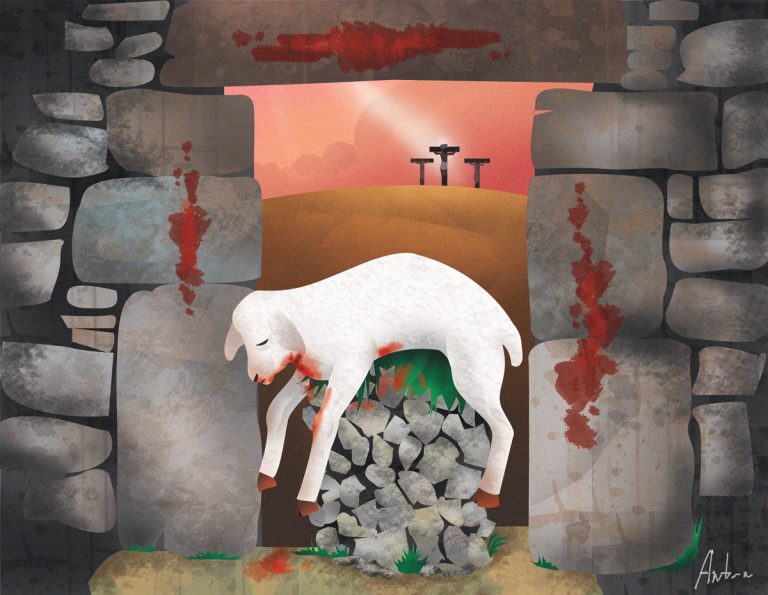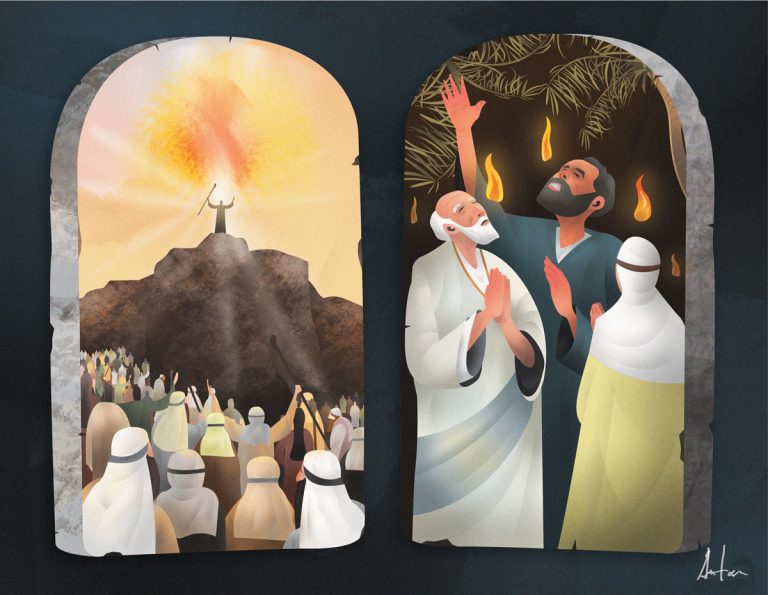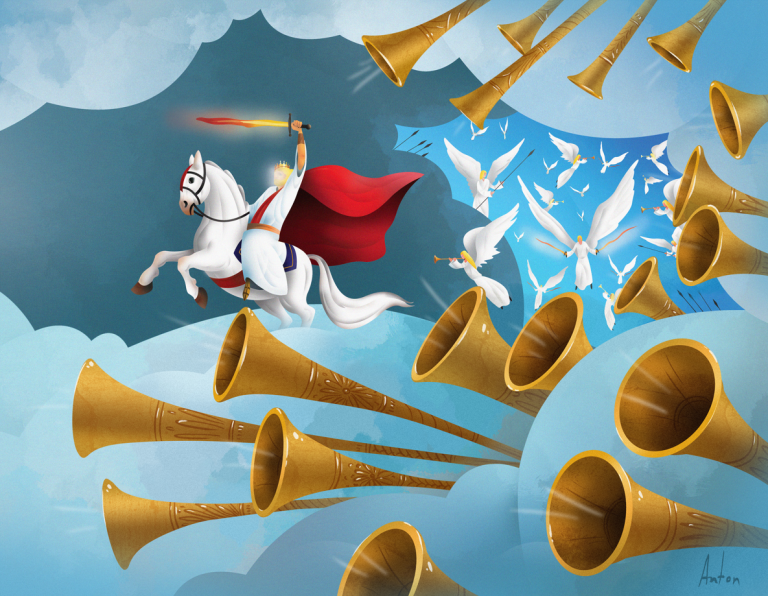The Prophetic Feasts Of Yhwh Elohim
Speak unto the children of Israel, and say unto them: “The appointed seasons of YHWH ELOHIM, which ye shall proclaim to be holy convocations, even these are My appointed seasons.”
“These are the appointed seasons of YHWH ELOHIM, even holy convocations, which ye shall proclaim in their appointed season.”
Leviticus 23 (Parshah Emor)
Introduction
Lately, more believers that are studying the Scripture raise the question about the Feasts and Holy Days, and are considering that YHWH ❋ ELOHIM ❋ instructed to observe them in His Word. They are beginning to realize that, nowadays, the true meaning of most of these Feasts, which are being celebrated in certain religious institutions, have been polluted by the human traditions and legends which originated from the depths of the Babylonian system. Either way, they are being reduced to idolatrous forms of worship, and they are distracting and leading people away from the real meaning of the feasts.
Other religious organizations tend to claim that festivals given by YHWH Elohim, in his Word (the Torah), have no significance today, and that they serve only to represent the historical aspect and ethnic tradition of a certain nation. This type of statement is a result of misunderstanding and ignorance regarding His Word. The consequence of this misunderstanding and ignorance is that pagan feasts, which also have Babylonian roots, replaced the true Feasts of YHWH. These pagan feasts became an integral part of these types of religious organizations, establishing a firm position in their traditions from one generation to the next, and keeping these denominations in ignorance and spiritual darkness.
The Feasts of the Most High were given to His nation, and if we are a part of that nation then they were given to us as well. We as believers ought to know and observe them, and by no means are we to replace them with pagan counterfeits.
The theme of the Feasts is both interesting and of great importance. YHWH Elohim dedicated a whole chapter in the book of Leviticus (chapter 23) where he chronologically described all the seven Feasts:
- First Feast – PASSOVER «PESACH»
- Second Feast – UNLEAVENED BREAD «HAG HAMATZOT»
- Third Feast – THE FEAST OF FIRSTFRUITS («REISHIT KATZIR» OR «YOM RISHON») The Feast of Firstfruits OR The Day of bringing the First sheaf (Reshit Katzir)
- Fourth Feast – THE FEAST OF WEEKS «SHAVUOT» «PENTECOST»
- Fifth Feast – THE FEAST OF TRUMPETS «YOM TERUAH»
- Sixth Feast – THE DAY OF ATONEMENT «YOM KIPPUR»
- Seventh Feast – THE FEAST OF TABERNACLES «SUKKOT»
If one were to follow through the history that is linked to these Feasts, then he would see very clearly that these feasts did not come with the ‘Law of Moses’, but that they have been observed during the time of the Patriarchs and they have coincided with the great events and key moments of the lives of Noah, Abraham, Isaac. This is also explicitly described in Moses’s (Moshe’s) manuscript, ‘The Book of Jubilees’ ❋ .
Each one of these seven Feasts is a prophetic day, or an ‘appointed time’. A part of the prophecy regarding each of the feasts has already come to be, while the other part is yet to come. These Holy Days existed then, exist now, and will continue to exist as central events of the Millennium Kingdom of Mashiach (Ezek.45:21; Ezek.45:25; Zech.14:16).
Also, in all of these seven Feasts, we can find prophetic information about Mashiach that regards His birth, death, and resurrection. It also encompasses His second coming, the Day of Judgment, and His rule in the Millennium Kingdom. The Most High has predetermined events that are destined to occur on these appointed feast days.
The authors of this book want to help the reader reveal the true meaning of the prophetic Feasts of YHWH Elohim, while avoiding various confessional teachings and interpretations. In this book we will also show the prophecies that have been described in the ‘Torah’ ❋ and confirmed by the ‘Ketuvim’ ❋ , the book of ‘Teilim’ ❋ , ‘Nevi’im’ ❋ , and the ‘B’rit Hadasha’ ❋ . We believe that this book will assist the believer in seeing the significance of these Feasts, and that it will become a conventional sign that will show their spiritual standpoint between past and future events.
The Spring Season – The Time Of The Sowing
The Summer Season – The Time Of The First Harvest
The Fall Season – The Time Of The Second Harvest
Appendix
Leviticus 20:23
We often do not give a second thought to what we are actually celebrating and whether it has any relation to YHWH of Israel that we belong to. As a matter of fact, many things that we observe now relate back to the pagan statutes of our ancestors… and behind their traditions are spiritual things to which we open our souls. They, at first glance, can be very “attractive” and “harmless” and even “interesting”, for example, tree with garlands, tattoo, yoga class, or the study of “hidden knowledge”. But all of this is the fruit of the tree “of knowledge of good and evil”, from which we are not told to eat. They have descended from fallen angels and do not glorify YHWH of Israel. Some of these rituals actually constitute the worship of Lucifer in a transformed way or through taking different forms. Below is the list of feasts that are most common and wide-spread nowadays:
- Feast Saturnalia disguised by the name Christmas (celebrated on December 25th according to the Gregorian Calendar and on January 7th according to the Julian Calendar) in which a major part of the world is usually involved. This feast celebrates the birthday of the god of sun, known by names of Mirtha, Tammuz, Baal-Berith, Ra, Gor, Zeus, etc, and an evergreen hewn tree acts as its symbol… Yeshua was not actually born on ‘Christmas’.
- The Festival of the goddess of fertility ‘Easter’, disguised as a Pascha (Passover) – the first Sunday following the first full moon after the spring equinox, the day of honouring the goddess of fertility Ishtar (Astarta/Easter). The symbols of this feast are painted eggs, Easter cakes, bunnies (symbols of reproduction) and lily flowers (symbol of fertility and female beginnings). Yeshua was not crucified on a ‘Good Friday’.
- ‘Sunday’, the day of worshipping Sun (Sunday) disguised as the day of the resurrection of ‘Jesus Christ’. The truth is that this day represents the day of resurrection of Tammuz, the son of Nimrod (Babylonian god of Sun). Yeshua did not resurrect on an ‘Easter Sunday’.
- The Festival of Lupercalia, the 14th of February, disguised as “ Valentine’s day”, has its roots in an Ancient Roman pagan festival which relates to ‘shepherd’s cult’, the celebration of the Ancient Greek deity named Pan. This festival used to take place every year from the 13th to the 15th of February in grotto of Lupercal at the foot of the Palatine hill. It was celebrated in honour of the she-wolf Lupa who suckled the infant-orphans Romulus and Remus, the founders of Rome. As the ancient historian Plutarch described it in the Life of Caesar: ‘At this time many of the noble youths and of the magistrates run up and down through the city naked, for sport and laughter striking those they meet with shaggy thongs. And many women of rank also purposely get in their way, and like children at school present their hands to be struck, believing that thepregnant will thus be helped in delivery, and the barren to pregnancy’. In 496 Pope Gelasius replaced this festival with celebrating “St. Valentine’s day”.
- The Festival Hilaria (Hilaria Matris Deûm): Greek Cybele – Attis cult and Egyptian Isis – Osiris cult disguised as Mother’s Day and celebrated on the second Sunday of May is the cult of the Great Mother of gods Cybele which gave birth to all that is alive – gods, humans, animals and plants. Cybele acts as a personification of female beginning in nature. Universal maternity of goddess is her foundation. Officially established in Rome in II century B. C. this cult of Cybele became one of the main competitors to the Christian way of life during the latter days of the Roman Empire.
You can look into other festivals, such as Halloween, International Women’s Day, The New Year’s, days dedicated to the various “Saints”, and others which have very suspicious meaning and background.
While writing this book, the authors referred to the following sources:
Amplified Bible (© 1954, 1958, 1962, 1964, 1955 by The Lockman Foundation)
Complete Jewish Bible (© 1998, Jewish New Testament Piblications)
New King James Version (© 1962, Copyright 1979, 1980, 1982 Thomas Nelson, Inc)
New Living Translation
The Message Bible (©2002, Eugene H. Peterson)
Tanah (© 1995 Jewish Publication Society)
Aramaic English New Testament (© 2012 by Netzari Press LLC)
New Testament in Hebrew and English (© The Society for distribution Hebrew Scriptures, 2000)
Библия перевод РБО 2011 (© 2011 Российское Библейское Общество)
Библия. Современный перевод (© 1993 Всемирный Библейский Переводческий Центр)
Еврейские Писания (© перевод архимандрита Макария, Псалтыр – перевод Г.П. Павловского и Христианские Греческие Писания – перевод Кассиана)
Полная Еврейская Библия в переводе Давида Стерна (© 1998 Давида Стерна)
Живой перевод нового завета (© 1996 International Bible Society)
Еврейский новый завет (© 1989, Jewish new testament publications, Д.Стерн, перевод с англ. А. Долбин, В. Долбина) Новый завет, буквальный перевод (NTOB Благовестие по Маттатиий; © Одинцов А., Белинский А.)
Новый завет, Штайнер (© Рудольф Штайнер)
Новый Завет, РБО 1824 (©1824, Российское Библейское Общество)
Новый завет. Перевод института перевода Библии в Заокском
Радостная весть. Перевод с Греческого (© Российское Библейское общество, 2001)
Русский перевод Священного Писания для Востока (© 2003, Российское Библейское Общество)
Русский синодальный текст (© 1876 Российское Библейское общество)
Русский Синодальный текст (с номерами Стронга)
Современный перевод НЗ на русский язык IBS
ТаНаЗ в переводе Фримы Гурфинкель
Танах Д. Йосифона (©1974, Иудейский перевод равви Давида Йосифона)
Танах Сборник лучших переводов (5 авторов)
Тора с комментариями Раши и Сочино (©Перевод Фими Гурфинкель)
Тора, Штейнберг (© Штейнберг О. Н.)
Женевская Библия. Синодальный перевод.Издание второе. (©Hanssler-Verlag 2001)
Новый завет. Восстановительный перевод (© живой поток и Уитнесс Ли, Анахайм 1998)
Новый завет (Общество по распространению священных писаний на иврите, 2003)
Біблія або книги святого письма старого й нового заповіту. Українське Біблійне Товариство, 2002







